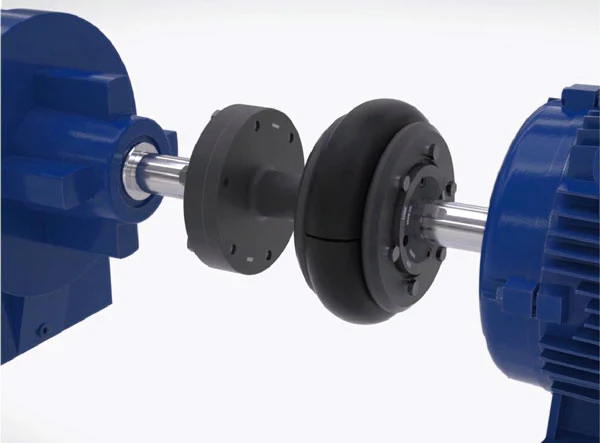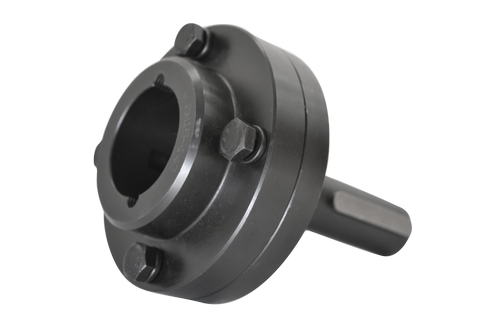Product Description
CE Approved High Speed Resilient Rigid Connection Fenaflex Spacer Shaft Pump Rubber Tire Tyre Coupling for Metallurgical Equipment
Product Name: type tire coupling Surface treatment: phosphating, blackening and spraying Coupling type: tire coupling Material: Rubber Scope of application: metallurgy, steel rolling, mining, chemical industry, shipbuilding, pumps, fans, etc. Features: the tire coupling has good shock absorption and buffering effect and the performance of compensating the deviation between axles. It is widely used in the occasions of impact vibration, variable CHINAMFG and reverse rotation and frequent starting.
Related products:
Production workshop:
Company information:
/* March 10, 2571 17:59:20 */!function(){function s(e,r){var a,o={};try{e&&e.split(“,”).forEach(function(e,t){e&&(a=e.match(/(.*?):(.*)$/))&&1
| Standard Or Nonstandard: | Standard |
|---|---|
| Shaft Hole: | 19-32 |
| Torque: | >80N.M |
| Bore Diameter: | 19mm |
| Speed: | 4000r/M |
| Structure: | Flexible |
| Samples: |
US$ 9999/Piece
1 Piece(Min.Order) | |
|---|



How Does a Spacer Coupling Protect Connected Equipment from Shock Loads and Vibrations?
Spacer couplings play a vital role in protecting connected equipment from shock loads and vibrations in mechanical systems. They act as a buffer between the driving and driven components, absorbing and mitigating the impact of sudden shocks and vibrations. Here’s how spacer couplings provide this protection:
1. Dampening Effect: Spacer couplings are designed with flexible elements or materials that possess inherent damping properties. When subjected to shock loads or vibrations, these flexible elements absorb and dissipate the kinetic energy, reducing the impact on the connected equipment. This dampening effect helps prevent damage to delicate components and extends the equipment’s lifespan.
2. Misalignment Compensation: In addition to damping, spacer couplings can also accommodate certain degrees of angular, parallel, and axial misalignment between the shafts. When misalignment occurs, the coupling’s flexibility allows it to adjust slightly, reducing the transmitted forces to the connected equipment. By minimizing the effects of misalignment, spacer couplings help avoid excessive forces that could lead to shock loads and vibrations.
3. Vibration Isolation: Vibrations can be generated by various sources, including unbalanced loads, motor vibrations, and external factors. Spacer couplings, with their flexible elements, act as vibration isolators, preventing the propagation of vibrations from one shaft to the other. This isolation protects the connected equipment from experiencing detrimental vibrations that may lead to wear, fatigue, or failure.
4. Torsional Stiffness: While spacer couplings offer flexibility to absorb shock loads and vibrations, they also possess adequate torsional stiffness. This property helps maintain shaft alignment and synchronization during normal operation, reducing the risk of additional vibrations caused by misalignment or torsional forces.
5. Material Selection: Spacer couplings are often manufactured from materials with excellent fatigue and shock resistance properties, such as steel or aluminum alloys. The choice of materials ensures that the coupling can withstand repeated shock loads without experiencing premature fatigue or failure.
6. Redundancy and Reliability: In critical applications where shock loads and vibrations are common, some designs incorporate multiple flexible elements or redundancies to enhance the coupling’s reliability and capacity to handle extreme conditions.
Overall, spacer couplings are essential components in mechanical systems that require protection against shock loads and vibrations. Their ability to dampen, isolate, and compensate for misalignment helps maintain the health and longevity of connected equipment, ensuring smooth and reliable operation in various industrial settings.

Impact of Spacer Couplings on the Overall Reliability of Connected Equipment
Spacer couplings play a critical role in enhancing the overall reliability and performance of connected equipment in power transmission systems. Here are the ways spacer couplings impact equipment reliability:
1. Misalignment Compensation: Spacer couplings can accommodate various types of misalignment, including angular, parallel, and axial misalignment. By allowing for flexible alignment between the connected shafts, spacer couplings help prevent undue stress and wear on the equipment components. This feature minimizes the risk of premature failures due to misalignment issues.
2. Vibration Damping: Spacer couplings act as shock absorbers, dampening vibrations and shocks generated during the operation of rotating machinery. By absorbing and dispersing these forces, spacer couplings reduce the transmission of vibrations to the connected equipment. This, in turn, reduces the risk of fatigue and vibration-induced failures, contributing to improved equipment reliability.
3. Overload Protection: In the event of sudden overload or torque spikes, spacer couplings can help protect the connected equipment from damage. The flexibility of spacer couplings allows them to absorb and dissipate excess torque or shock loads, preventing catastrophic failures in the system.
4. Reducing Wear and Tear: Spacer couplings minimize friction between shafts and mechanical components by allowing smooth and flexible movement. This reduces wear and tear on shafts, bearings, and other elements, leading to extended equipment life and enhanced reliability.
5. Enhanced Service Life: The ability of spacer couplings to compensate for misalignment and reduce vibration-related stress on connected equipment components results in extended service life for the machinery. By reducing the occurrence of breakdowns and the need for frequent repairs, spacer couplings contribute to overall system reliability.
6. Maintenance Simplification: Spacer couplings often require less maintenance compared to rigid couplings. Their ability to handle misalignment reduces the need for frequent realignment, and their design typically includes fewer moving parts, reducing the likelihood of maintenance-related issues. This simplification of maintenance procedures contributes to improved equipment reliability.
7. Contamination Prevention: Some spacer couplings are designed to protect against the ingress of contaminants such as dirt, dust, and moisture. By preventing the entry of harmful particles, spacer couplings help maintain the integrity of the connected equipment, reducing the risk of component damage and improving overall reliability.
8. Application-Specific Design: Spacer couplings are available in various designs and materials to suit specific applications and industries. Choosing the appropriate spacer coupling that meets the unique requirements of the application further enhances the overall reliability and performance of the connected equipment.
Overall, spacer couplings promote smooth power transmission, minimize stress and wear on equipment components, and protect against adverse operating conditions. By contributing to increased equipment reliability and service life, spacer couplings play a crucial role in the efficiency and longevity of rotating machinery and power transmission systems.


editor by CX 2024-02-01